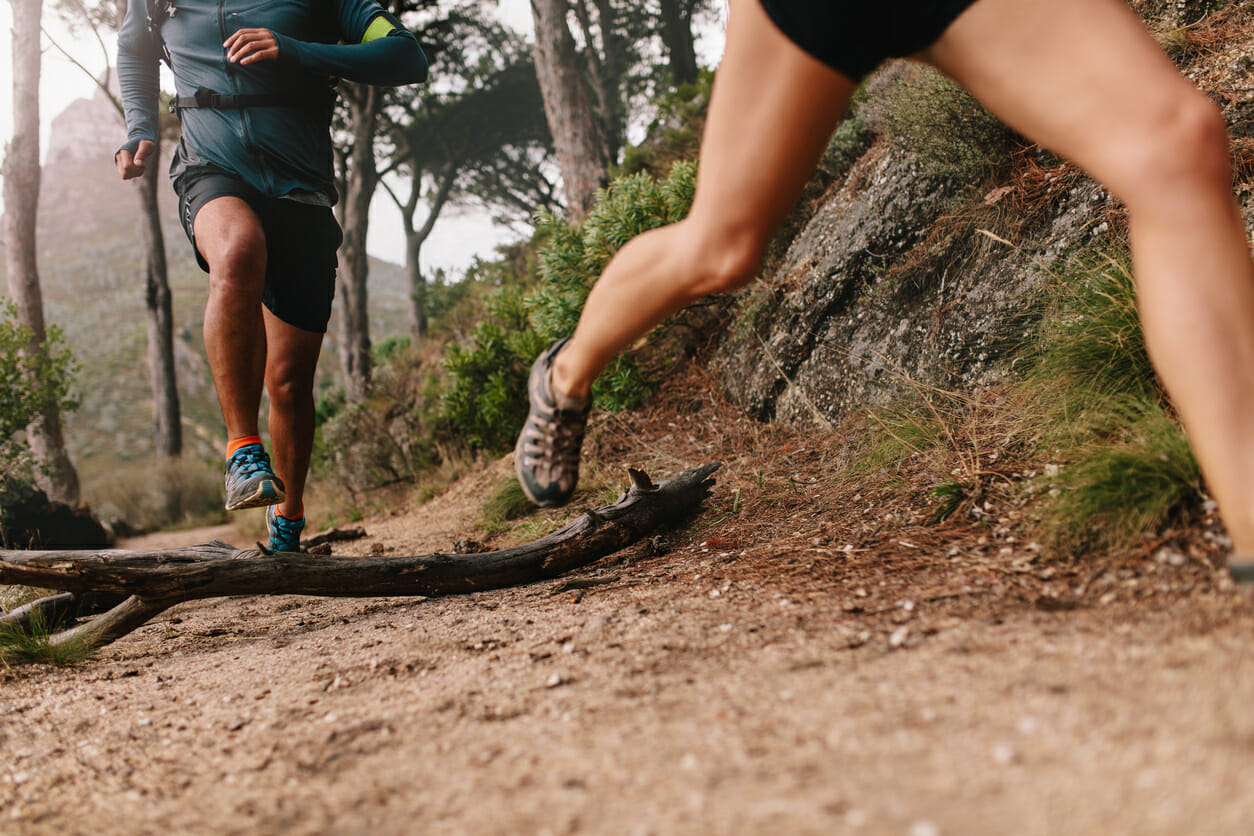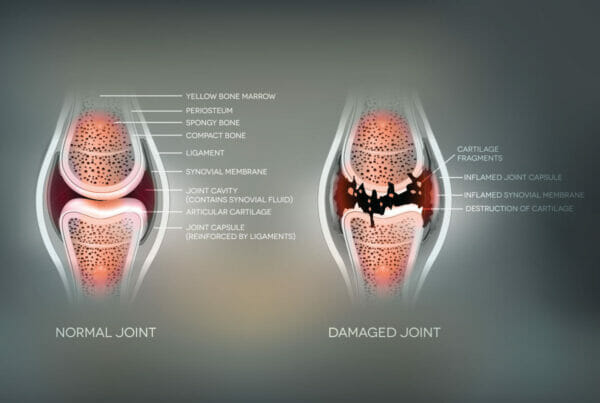Trail Running Injuries and Exercises for Trail Running Injury Prevention
For runners across the world, escaping to the great outdoors to explore diverse terrain presents a new challenge different from the monotony of road running. Today, more than 20 million trail runners are currently enjoying one of the fastest-growing sports worldwide.
With any new challenge, however, there is potential for injuries — both acute and chronic — which can make the trail running experience anything but enjoyable.
While rocks, roots, and slippery leaves on uneven terrain can create potentially dangerous conditions, poor running form can present just as much of an injury hazard to even the most veteran runners.
According to RunnersConnect, trail running stresses different parts of the leg muscles than road running. To accommodate new conditions like steep uphills, soft surfaces, and unevenness, your body will recruit different muscles.
Whether you’re trail running recreationally or training for a race, a trail running exercise program can help you keep proper form and avoid trail running injuries. If you’re struggling to find out where to start, here’s a closer look at some of the most common trail running injuries and a few exercises to help you build strength and prevent injury.
4 Types of Common Trail Running Injuries
In 2015 a group of researchers noticed a lack of studies focusing on overuse injuries among trail runners and decided to conduct a study to identify the most common musculoskeletal injuries among trail runners.
While the lower back was the most reported injury area, the most commonly diagnosed injuries were:
- bone stress injuries
- iliotibial band syndrome (IT band)
- Achilles tendon injuries
Bone stress injuries can affect the legs and feet. While many road runners often deal with shin splints, metatarsal pain is more common among trail runners.
In a recent article in Running Magazine, Dr. Greg Lehman explains that metatarsal pain is caused by overloading the small bones of the foot. Sharp inclines can also cause extra metatarsal stress for trail runners.
RunnersConnect also points out that trail running shoes with stiffer midsoles and rock plates can also cause unnecessary stress. If you’re a beginner trail runner, it might not be the best idea to invest in trail running shoes right away. However, it’s definitely critical for any runner to select proper footwear, as a good pair of shoes can help you avoid pesky trail running blisters.
Regarding ITB pain, Dr. Lehman attributed this common trail-running injury to strength imbalance due to repetition and compression of the distal component of the band.
The Human Movement researchers also found that lower back pain and Achilles tendon injuries had the highest levels of reported severity. These two types of injuries were also found to be the most chronic for trail runners. Poor running form is a top contributor to both of these nagging injuries.
Proper Running Form and Hill Technique
Proper trail running is all in maintaining good form. With proper running form, you can run more efficiently and promote trail running injury prevention.
The Marathon Handbook has nine tips for good running form:
- Look ahead.
- Keep your arms at roughly a 90-degree angle.
- Relax your hands.
- Keep your spine lengthened.
- Relax your shoulders down and back.
- Keep your arms at your sides.
- Rotate your arms from your shoulders.
- Don’t bounce up and down too much.
- Run lightly.
While these nine tips seem fairly simple, it’s not always easy to assess whether or not you’re running with good form. To avoid being alerted to poor form by way of an injury, consider a running analysis. RPT offers personalized running specific and gait analysis to help you enhance running mechanics and efficiency and prevent injury.
Aside from the basic running form, trail runners also need to master hill techniques.
According to Trail Runner magazine, when it comes to the uphill technique, the main thing to focus on is leaning forward to use momentum to carry you up the mountain. When you’re conquering uphill terrain, it’s crucial to key in on shoulder and back relaxation to keep muscles loose.
The downhill technique can vary depending on the type you encounter. For example, for a more clear and defined trail, a longer stride with a flat-footed strike can help evenly distribute the load away from your knees. For a more technical downhill, shorter strides are better to help evenly distribute load while also preventing tripping, which can lead to ankle sprains.
Exercises for Strength and Trail Running Injury Prevention
Trail running strength exercises are some of the best ways to help improve your endurance and promote trail running injury prevention. For trail runners, exercises focused on building strength in your legs, ankles, knees, and core can help mitigate common trail running injuries.
The Best Leg Exercises for Trail Running
Strengthening your legs and glutes can help you improve your uphill and downhill efficiency while also providing critical strength for avoiding ankle injuries when trail running.
Stair steps, split squats, split jumps, and standing calf raises are all easy bodyweight exercises that don’t involve any costly equipment. The American Trail Running Association has a 7-minute plan featuring all of these exercises.
The Best Core Exercises for Trail Running
Stability exercises are some of the most effective ways to improve your core strength, which is essential for trail runners who need to stay nimble on their feet.
The American Trail Running Association suggests using a stability disk for leg lifts and leg circles. Using a stability ball, balance with one leg on the ball and lean forward while lifting your other leg up and backward; keep it straight as you extend.
After repeating on both legs, switch to disk circles. Begin with one leg on the stability ball and your other leg slightly extended. Create both wide and small circles, keeping motions slow and controlled.
Band Exercises for Trail Running
Knee pain is often caused by tightness or weakness in the hips and glutes. One of the best band exercises for trail runners is clamshells. Simply place a resistance band around your knees, lay on your side with legs bent and ankles together, and open your knees as far as you can while keeping your feet together.
Glute bridges are also a great way to build strength by lifting your hips directly from the floor by pushing through your heels, activating your glutes from the bridge position. Adding a resistance band around your knees adds an extra dimension to this exercise.
Our Sports Physical Therapists Can Help
No matter your skill level, the sports physical therapists at RPT can help you design an exercise plan customized to your trail running goals. Whether you’re dealing with a chronic injury or seeking to build strength and prevent trail running injuries, our experienced therapists can help. Contact RPT today to schedule an appointment for your personalized evaluation.




